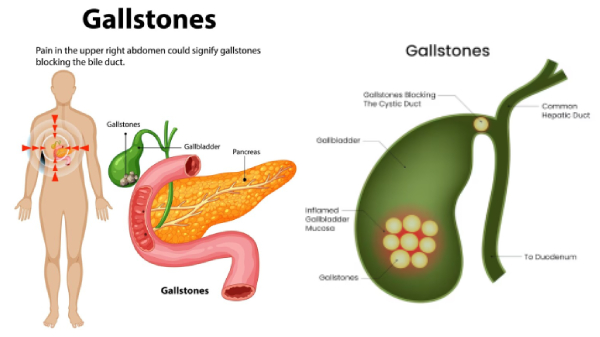Gall Bladder Stone
- Home
- /
- Gall Bladder Stone

Gall Bladder Stone
Dr. Soham, a medical professional specializing in gastroenterology, might provide a comprehensive understanding of gallbladder stones, also known as gallstones, which are hardened deposits that form in the gallbladder. The gallbladder is a small organ located under the liver that stores bile, a substance produced by the liver to aid digestion. Gallstones can develop when there is an imbalance in the substances that make up bile, leading to the formation of these stones.
There are two main types of gallstones:
Cholesterol Gallstones: These are the most common type, formed when there is too much cholesterol in the bile.
2. Pigment Gallstones: These are smaller and darker, formed when there is excess bilirubin in the bile, often due to liver disease or blood disorders.
Symptoms of Gallstones:
Many people with gallstones experience no symptoms at all, a condition known as “silent” gallstones.
When symptoms do occur, they can include sharp, cramping pain in the upper right abdomen, nausea, vomiting, and digestive disturbances after eating fatty meals. This pain can last for several minutes to hours.
Risk Factors:
Obesity: Excess body weight increases cholesterol levels in bile.
Age: Gallstones are more common in people over 40.
Gender: Women are more likely to develop gallstones, particularly during pregnancy or with hormone replacement therapy.
Genetics: Family history can play a role in the development of gallstones.
Diagnosis and Treatment: Dr. Soham would likely recommend imaging tests such as an ultrasound or CT scan to diagnose gallstones. If stones cause symptoms, treatment options may include:
Medications to dissolve cholesterol stones (though this is less commonly used).
Surgical removal of the gallbladder (cholecystectomy), which is the most common and effective treatment for symptomatic gallstones.


